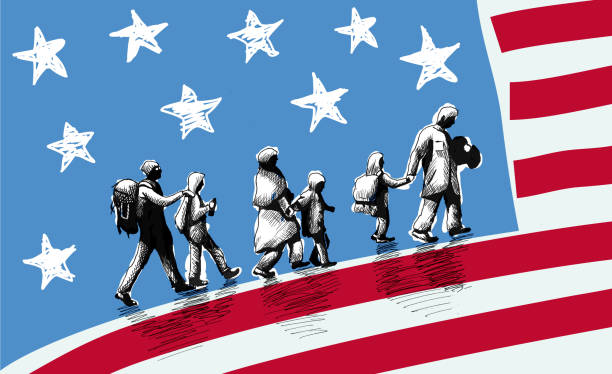
This was an image that I came across when designing a week long unit on immigration to the US. When I look at this image, it makes me think about the difficult journeys many immigrants take to get to where they are going and just how much they have to leave behind, both physically but also in terms of identity. In this image, the people are continuing to walk on and into the American flag, and I think this does a nice job symbolizing how the journey for immigrants does not stop once they reach their destination but rather it is just the beginning, and often not an easy one. The image also makes me think about immigrant children and how their experiences may differ from those of their parents. I have worked with students of varying immigrant statuses, and it is always interesting to hear them share about the commonalties and differences in terms of how they relate to both each other’s stories/experiences but also the stories/experiences of their parents. Some students have shared that they no longer feel a want to go back to their country while others miss it greatly. Some students have shared they feel torn between both places and cultures, and some have shared that their parents hold one set of expectations for their child while the child is trying to navigate and discover who they are on their own. Immigration is a very complex and important topic, and I am looking forward to how this course will expand my knowledge about it.

